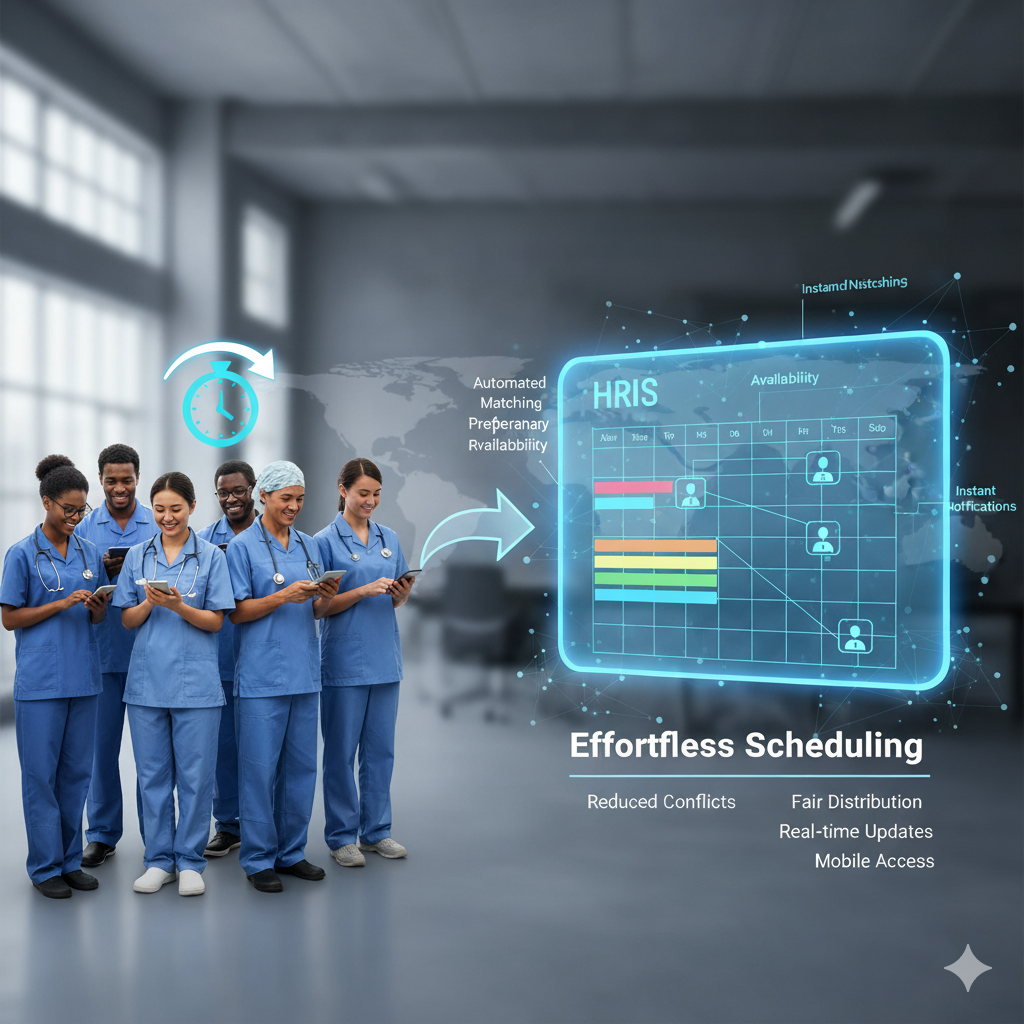Address
Kaypian, San Jose Del Monte City, Bulacan Philippines
Work Hours
Monday to Friday: 8AM - 6PM
Weekend: 10AM - 5PM
Address
Kaypian, San Jose Del Monte City, Bulacan Philippines
Work Hours
Monday to Friday: 8AM - 6PM
Weekend: 10AM - 5PM


Integrated HR. Accurate Payroll.


Integrated HR. Accurate Payroll.

In dynamic workplaces, employee schedules often need to be adjusted to meet operational demands. Whether it’s covering an absent coworker, managing seasonal workload spikes, or accommodating personal employee requests, temporary shift scheduling has become a common practice.
However, managing these schedule changes manually—through spreadsheets, paper forms, or emails—often leads to confusion, miscommunication, and payroll discrepancies. That’s where a Human Resource Information System (HRIS) makes a big difference.
By digitizing and automating scheduling tasks, HRIS systems simplify temporary shift scheduling for employees while improving transparency and efficiency for HR and managers.
Temporary shift scheduling refers to short-term changes in an employee’s work hours or shift assignment. This can include:
These changes are essential for ensuring business continuity, but without a structured system, they can create scheduling conflicts and payroll errors.
Organizations that still rely on manual shift scheduling often encounter challenges such as:
An HRIS system automates the entire scheduling process, reducing errors and improving workforce flexibility. Here’s how:
Employees can request temporary shift changes directly in the HRIS portal or mobile app, while managers can review and approve instantly.
Once approved, employees receive instant notifications about schedule changes, ensuring no miscommunication.
Shift changes automatically reflect in attendance records and payroll computations, ensuring accurate salary processing.
Managers can easily adjust staffing based on workload, ensuring optimal productivity.
Employees can view their updated schedules anytime, reducing confusion and disputes.
✅ Efficiency and Time Savings: HR no longer needs to manually update spreadsheets or send endless emails.
✅ Improved Accuracy: Shift changes automatically sync with attendance and payroll, reducing human error.
✅ Better Employee Experience: Employees gain control and visibility over their schedules, improving satisfaction and morale.
✅ Compliance with Labor Laws: HRIS enforces company policies and labor regulations (e.g., required rest hours, overtime rules).
✅ Workforce Optimization: Managers can ensure proper staffing levels by easily adjusting temporary shifts.
Temporary shift scheduling is a vital part of workforce management, but handling it manually creates inefficiencies, errors, and frustration. By leveraging an HRIS system, companies can simplify the process, improve accuracy, and enhance employee satisfaction.
In short, HRIS systems transform temporary shift scheduling into a seamless, transparent, and efficient process that benefits both employees and employers.